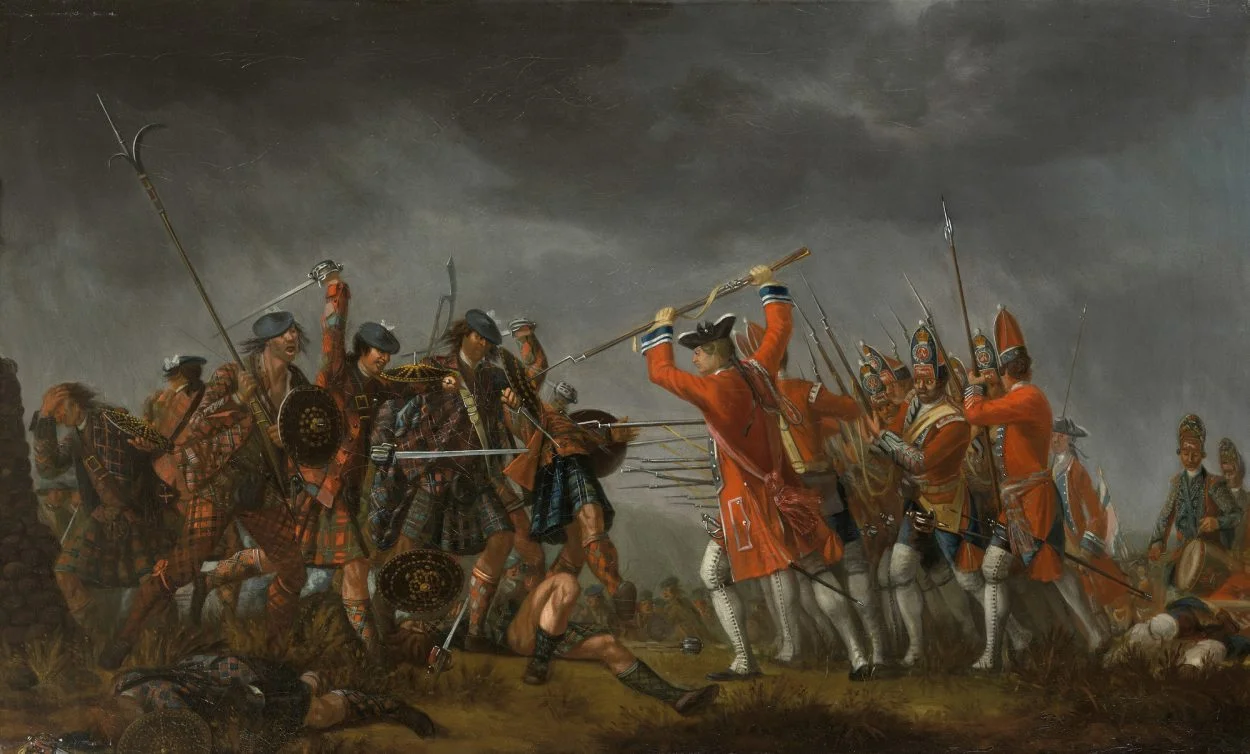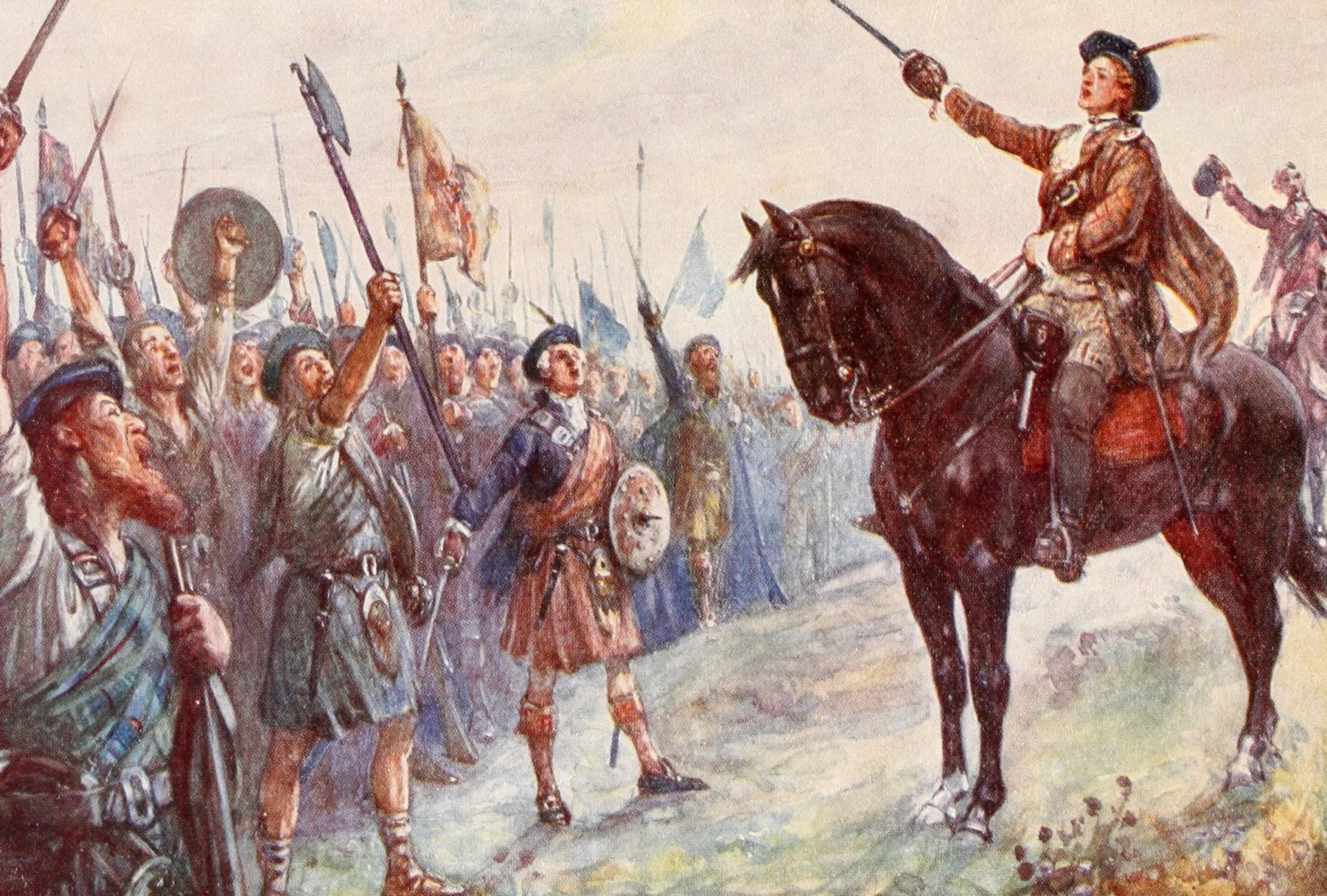The term “clan” is derived from the Gaelic word “clann”, meaning family or children, however, it is a misconception that persons who bear a clan’s name is a lineal descendant of the clan chief (ceannard cinnidh) or hereditary family.
Many clansmen took their Chief’s surname to show solidarity, through marriage, to settle in clan territory, or to obtain the protection of the ruling family in a system known as the ‘Duthcas’.
The clan centred on the chief, who’s succession was governed by a system known as ‘Tanistry’, an ancient law of succession where an heir was chosen from individuals within the hereditary line, often descendants of former Chiefs.
Beneath the Chief is the Chieftains, heads of individual houses from which the clan formed, the eldest of which was called the ‘Toiseach’, and then there are the ‘Daoin-Uaisle’, the aristocracy or clan elite.
At the bottom of the tier system are the main clan members. Most of a clan’s followers were tenants, supplying labour to work the lands, and sometimes to fight in clan feuds and times of greater turmoil against the armies of England.
The origins of the clans vary, often claiming mythological founders that reinforced their status and glorified notions of their origins, such as Clan Campbell, that claimed they had descended from Diarmid O’Dyna, a demigod, son of Donn, and one of the Fianna in the Fenian Cycle of Irish mythology.
The progenitors of clans can rarely be authenticated further back than the 11th century, and a continuity of lineage in most cases cannot be found until the 13th or 14th centuries. Some clans also have an ethnicity from outside of Scotland, such as Norman, Anglo-Norman, Flemish and Norse origins.
For centuries the clans ruled over their kingdoms with relative autonomy, however, in 1493, James IV confiscated the Lordship of the Isles from the MacDonalds, bringing a period of unrest and rebellions against the Scottish crown.
To solidify his position, James decreed the ‘Slaughter under trust’ law in 1587 and required disputes to be settled by the Crown. The first recorded use of the law was in 1588, where Lachlan Maclean was prosecuted for the murder of members of the MacDonald clan.
With the union of the Scottish and English crowns under James VI and I in 1603, the kingdoms of Scotland and England were still individual sovereign states, with their own parliaments, judiciaries, and laws, though both were ruled by James in personal union.
James VI also had an uneasy relationship with the clans and moved to dismantle Clan MacGregor for the killing of members of the state-backed Clan Colquhoun, ruling that the name MacGregor should be “altogether abolished” and forcing all MacGregors to renounce their name under pain of death.
James also issued the Statutes of Iona, a series of provisions to bring the Scottish Highlands and Islands under state control. The provisions required that Highland Scottish clan Chiefs send their heirs to Lowland Scotland to be educated in English-speaking Protestant schools.
The Statutes of Iona also prohibited the general import and sale of wine and whisky, a crime for protecting fugitives, a suppression of bards and other bearers of the traditional culture, and a ban on carrying hagbuts or pistols, or shooting at deer, hares, or fowls. The clan Chiefs who fully subscribed to this new system of regulation were rewarded with charters that formalised their ownership of clan lands.

During the Jacobite rising of 1745, Charles Edward Stuart, also known as Bonnie Prince Charlie, wanted to regain the British throne for his father, James Francis Edward Stuart, and launched an invasion of England that reached as far as Derby in Derbyshire.
He was eventually confronted by converging armies made up of troops recalled from fighting in the War of the Austrian Succession on the continent. The Jacobite’s retreated back to Scotland after failing to secure reinforcements and the promised French troops that never transpired.
The uprising was eventually crushed during the Battle of Culloden on Drummossie Moor near Inverness in the Scottish Highlands. The aftermath of the battle resulted in the burning of many homes, and a mandate to further supress the highland way of life.
The wearing of highland dress, including the kilt was forbidden in a law known as the Dress Act 1746, although an exemption allowed the kilt to be worn in the army, continuing the tradition established by the Black Watch regiment.
Carrying weapons was also outlawed, and new laws were passed to dismantle the clan system in the Act of Proscription 1746. The Act of Proscription was followed by the Heritable Jurisdictions Act 1746 which removed the feudal authority of the Clan Chieftains. Scottish heritable sheriffdoms reverted to the Crown, and other heritable jurisdictions, including regalities, came under the power of the courts.
During the 18th century, Clan chiefs started to think of themselves more as landlords and restricted the ability of tacksmen to sublet land to increase the income from the estates. This resulted in many tacksmen and wealthier farmers to emigrate for new lands, in which historian, T. M. Devine, describes “the displacement of this class as one of the clearest demonstrations of the death of the old Gaelic society.”
A significant number of tenants in the Scottish Highlands and Islands were also evicted in a period known as the “Highland Clearances”, replacing the open fields managed on the run rig system and shared grazing with large-scale pastoral farms. Tenants were unable to afford the higher rents, and landowners would often pay for them to emigrate with little choice on their destination.
The primary motivation for the clearances was economic, as many of the clan Chiefs found themselves in financial debt and chose to ignore their obligations under the ‘Duthcas’ system. This was the final blow in the Clan system, that was in decline since the Act of Proscription in 1746.
Header Image Credit : H. E. Marshall, published 1906 – Public Domain





